A Self-Driving Greenhouse Ball Could Be the Future of Urban Gardens
Imagine uprooting your community garden and replanting it inside a motorized geodesic sphere, then letting this sphere roam the city streets of its own volition, using sensors to seek out its plants' preferred environmental conditions.

Imagine uprooting your community garden and replanting it inside a motorized geodesic sphere, then letting this sphere roam the city streets of its own volition, using sensors to seek out its plants’ preferred environmental conditions. It’s a wild concept, but that’s exactly what researchers at the Interactive Architecture Lab have done in creating Hortum machina, B., a “new cybernetic lifeform” that’s “half-garden, half-machine.” The speculative design updates horticulture for a future filled with self-driving cars and other forms of intelligent robotics.
This “urban cyber-gardener,” as designers William Victor Camilleri and Danilo Sampaio call it, is part public art project, part architectural proposal. Working in a masters program at University College London’s Bartlett School of Architecture, Camilleri and Sampaio are part of the reEarth Project, a research group that explores new forms of bio-cooperative interaction between people, nature, and the built environment.
With an exoskeleton inspired by Buckminster Fuller’s “Buckyball” architecture, the Hortum machina, B. houses 12 modular planters that grow a selection of native British flora. Outwardly-extending linear motors allow the geodesic sphere to roll itself around by shifting its center of gravity. Perhaps most impressively, the modular gardens are equipped with sensors that allow the structure to seek out prime living conditions for the plants inside. If the plants need more light, for example, the ball will roll until it finds a spot of sun, then settle there for a while.
“While plants lack a nervous system, they can, much like animals, become electro-chemically stimulated by their surrounding environment,” the designers explain. “Through the study of plant electro-physiology, we have wired their primitive ‘intelligence’ into the control-loop of an autonomous robotic ecosystem.”

The design recalls artist Theo Jensen‘s kinetic, wind-powered Strandbeest sculptures, as well as an infamous Japanese prank involving a giant boulder rolling down a city street, freaking out pedestrians. In a video, Interactive Architecture Lab documents people’s amused, curious reactions to encountering this “urban cyber-gardener” on the streets of London. The relative novelty of responsive, kinetic architecture makes this self-driving garden sphere seem strange and foreign, but the designers suggest autonomous robotics should be integrated into a new architectural norm.
“Largely architecture is understood as static,” the designers write. “Buildings do not conform to nature, its environment and nor to human beings. We as architects feel the need to integrate plants in buildings to the point where people think of them as actual living systems. Therefore, our general theme and approach in this set of projects is that plants should become part of our society as well as self-reliant, and be given the ability to autonomously interact and walk with us.”
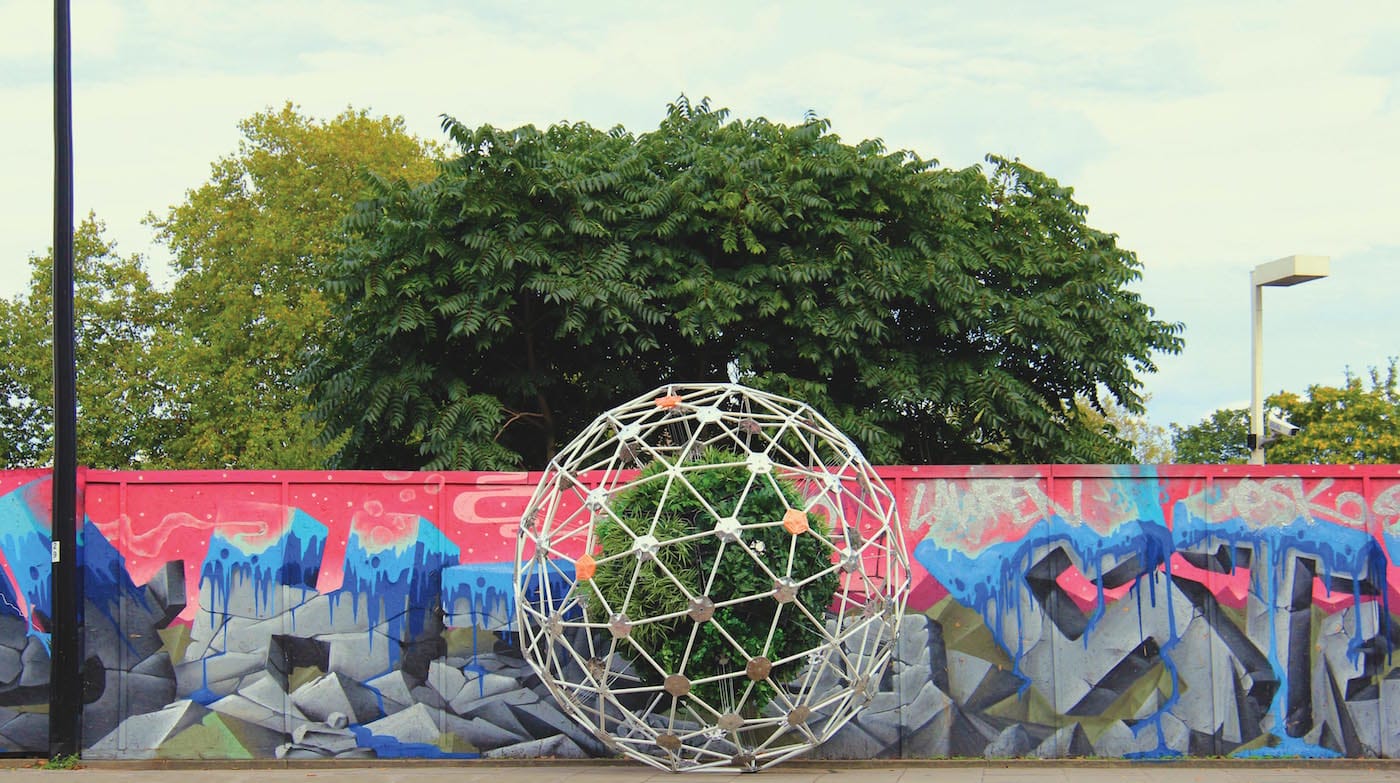
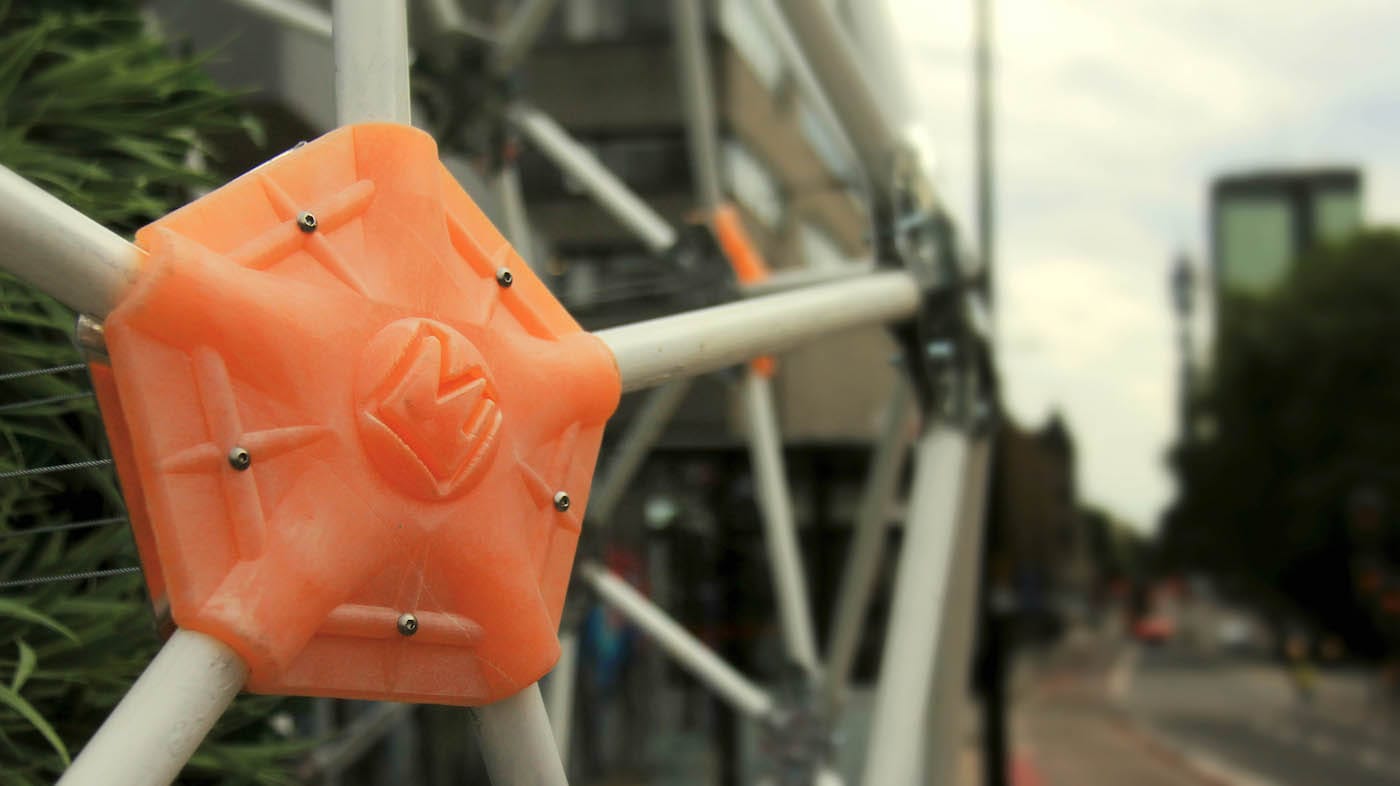
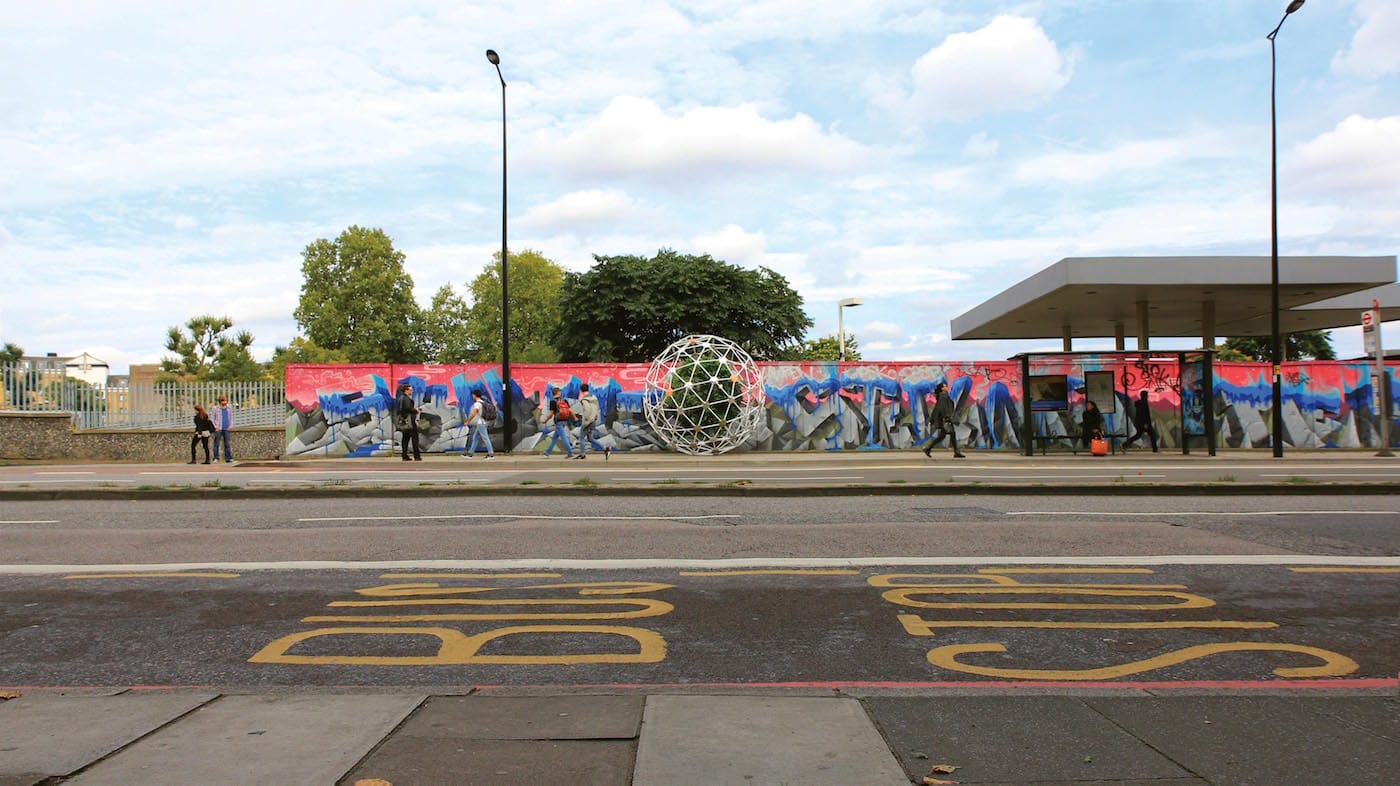
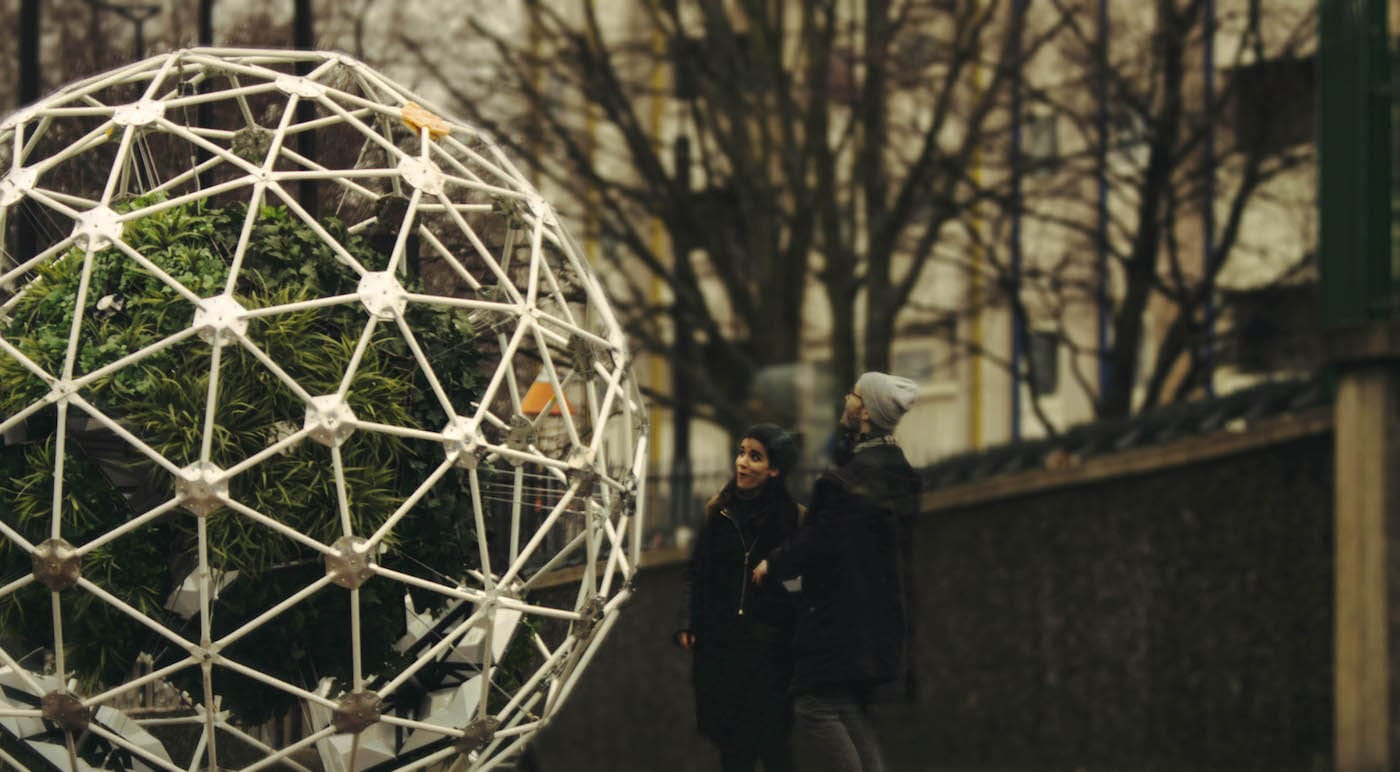

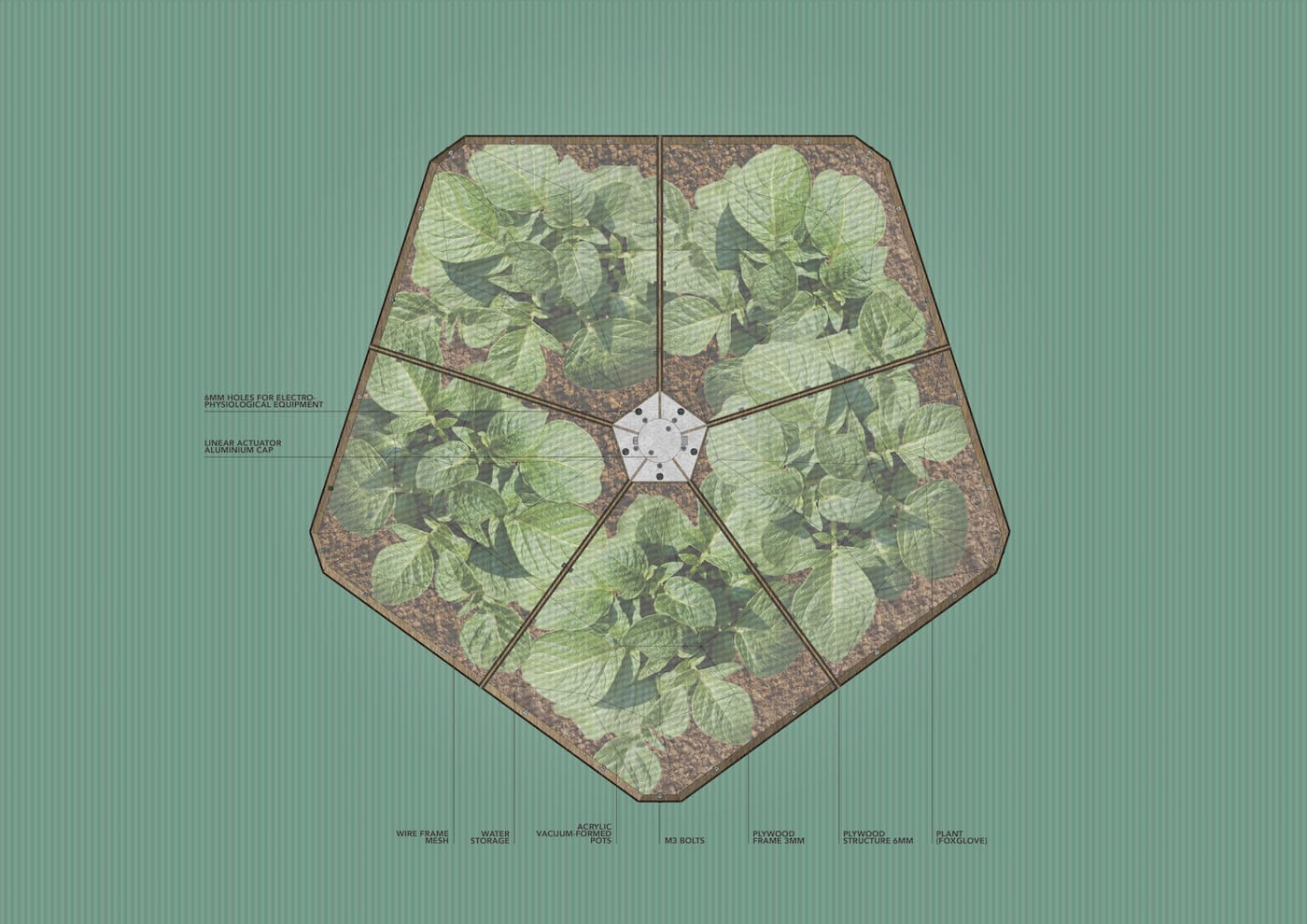
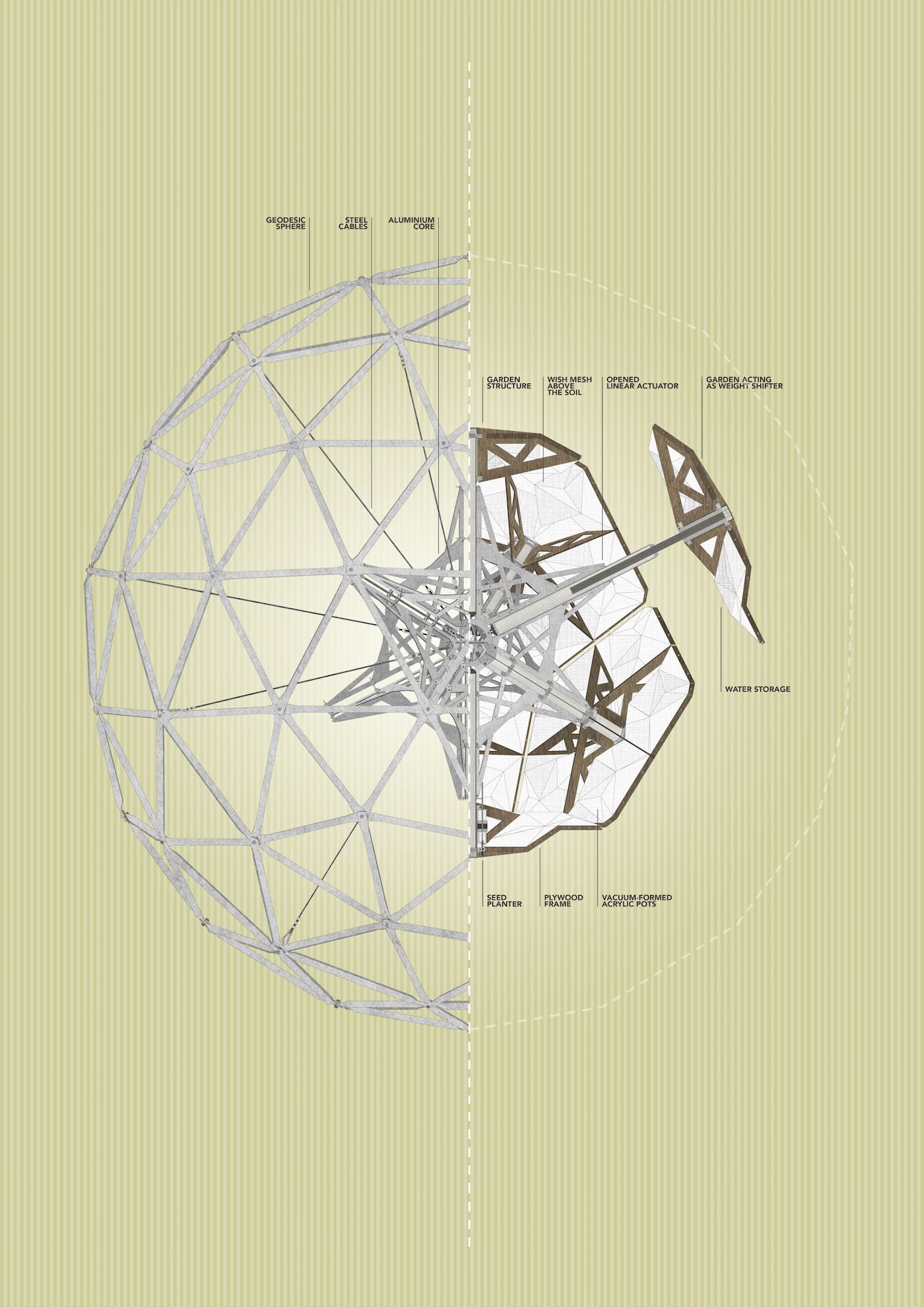
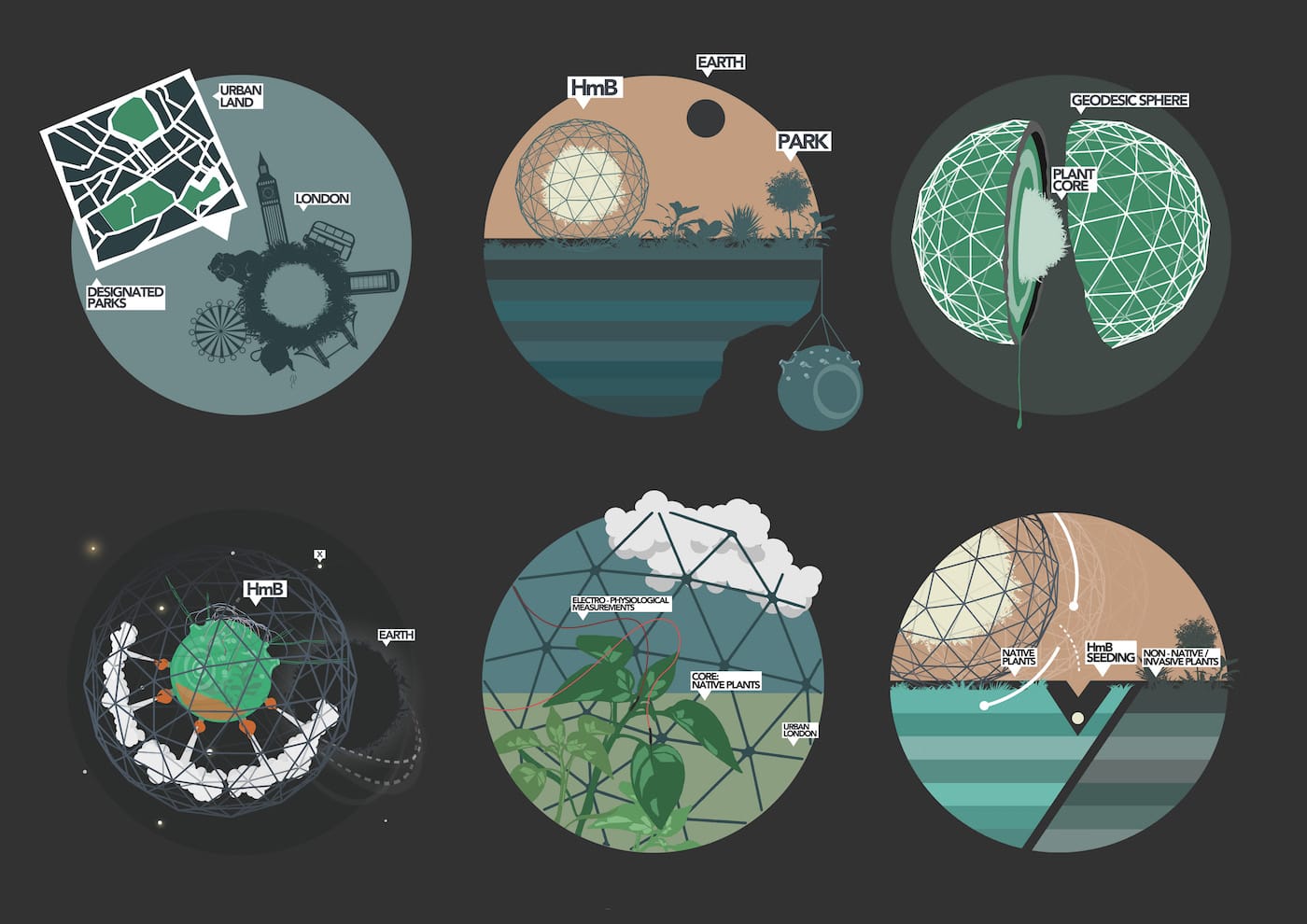
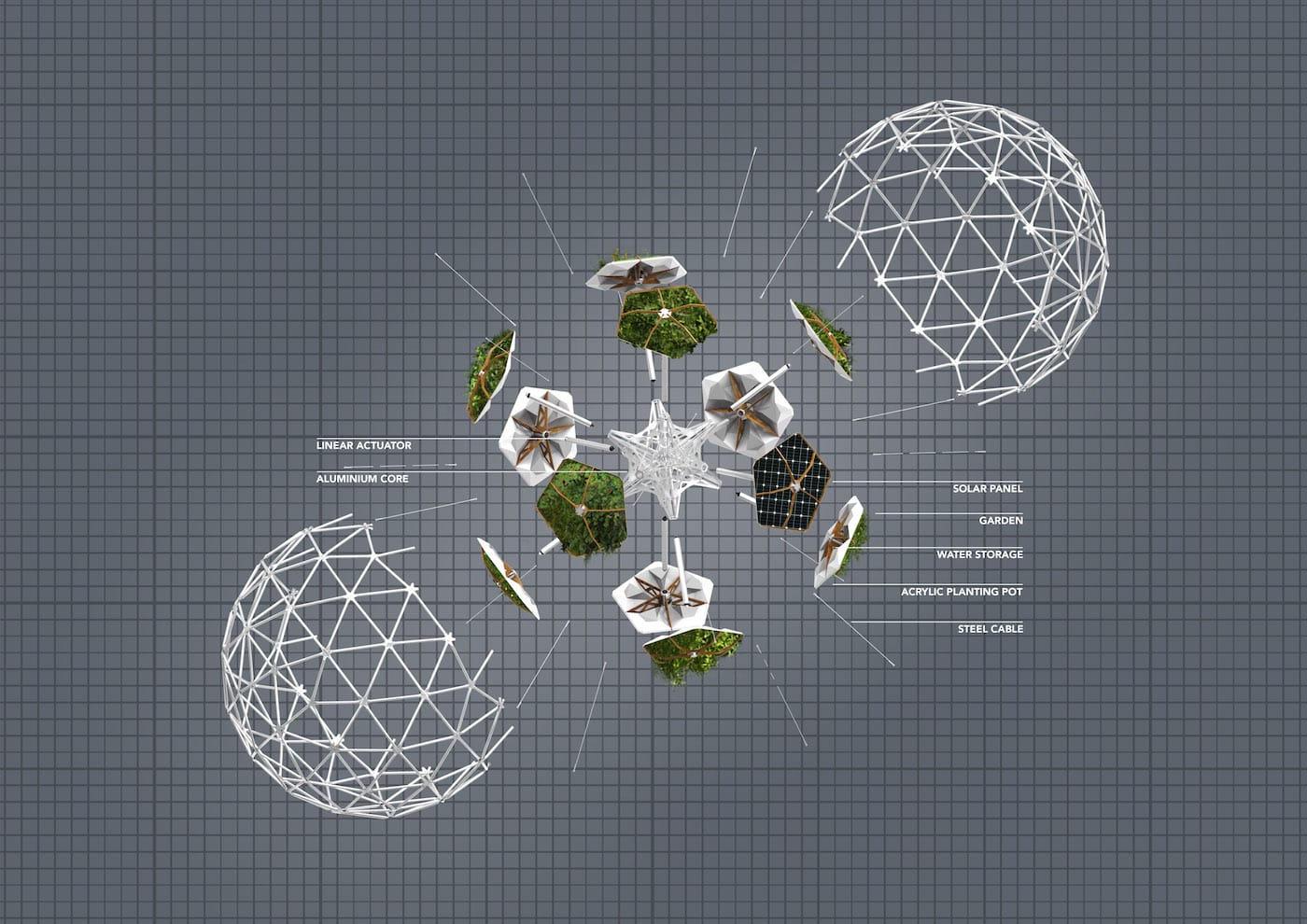

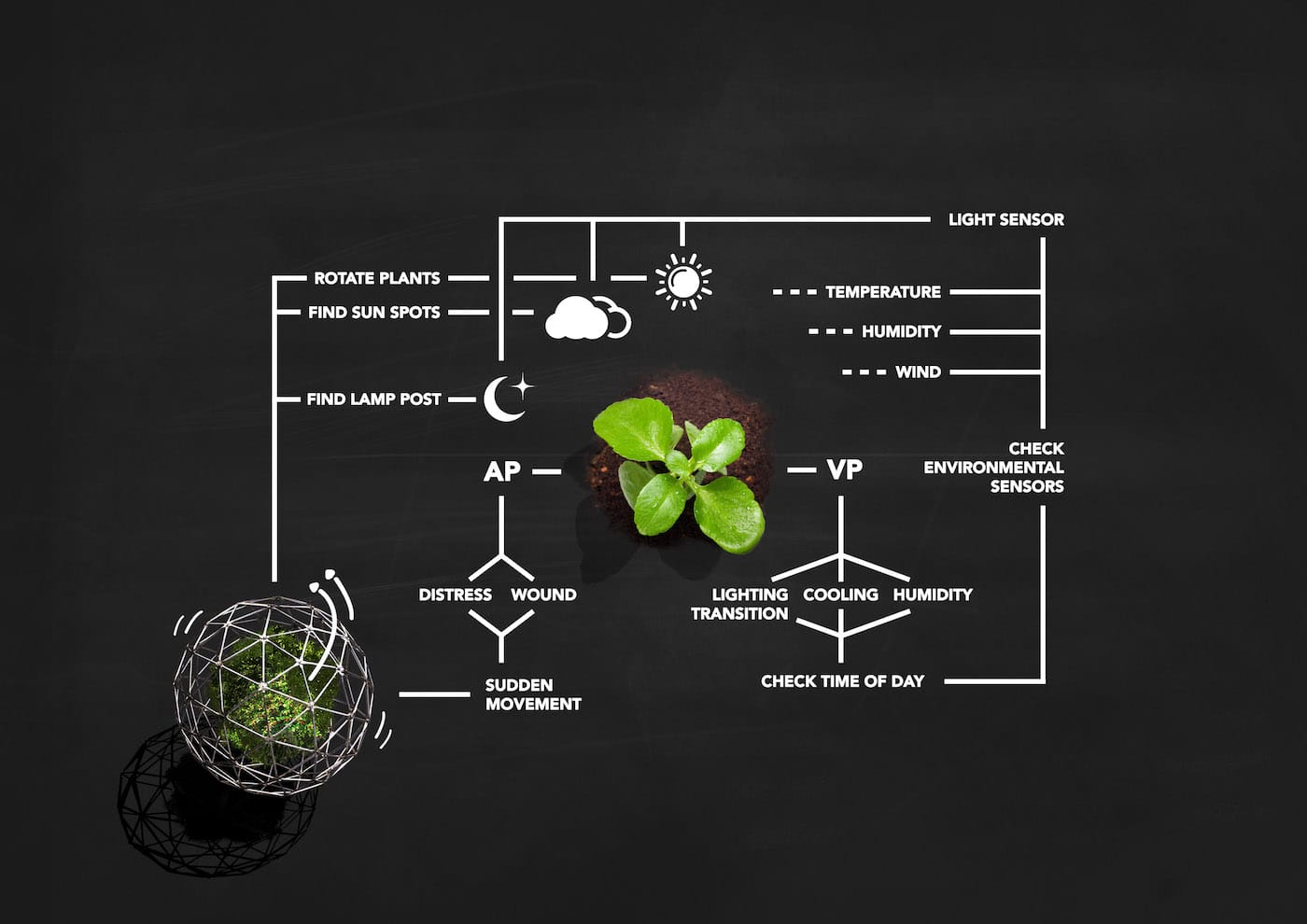

Read a detailed account of the making of Hortum Machina, B. here.
h/t DesignBoom





